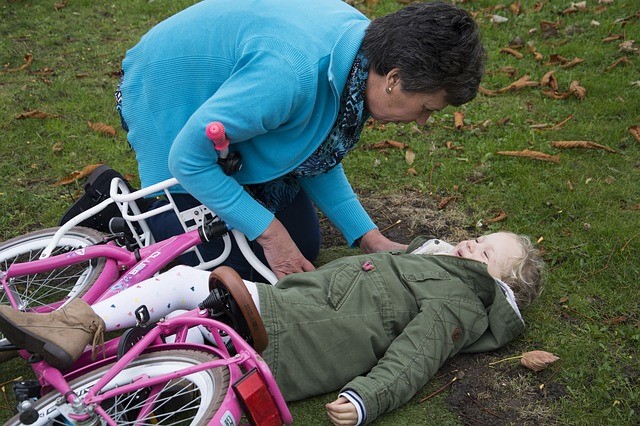As a parent, it’s natural to be protective of your child.
That’s what you do as a parent – keep your child safe and prevent them from getting hurt as much as possible, especially when they’re young.
But like any other thing in life, too much of a good thing can be bad.
Although parents have the best intentions when protecting their children, there is such a thing as being too protective. This is the ‘cotton wool’ approach to child-rearing. And who can blame them? You often see more bad news in the media than positive stories, so it’s natural to feel like you need to protect your child more than you think you should.
But know that being overprotective can go overboard real fast. And if you’re not careful, you may end up holding your child back from learning and growing.

Children Learn by Exploring – Don’t Stop That
“What doesn’t kill you makes you stronger.”
Young children are still new to the world, and they have yet to learn the risks and dangers that are out there.
But children, especially toddlers and infants, learn by experience. They mostly learn by trial and error. That’s why they’re always climbing over things, putting strange things in their mouths, and touching and holding everything they can get their hands on. It’s their way of learning what’s good and what’s not.
And if you prevent your child from doing these, you may be depriving them of the opportunities to learn for themselves what to avoid in the world, making them less capable of identifying risks and avoiding them.
Of course, this doesn’t mean you should stop looking after your child entirely – there are many things you need to keep them away from. But you do need to find the fine line between being overprotective and letting them explore the world openly.
How to Find Balance
To raise a smart, confident, and curious child, you need to balance your protective instincts with your child’s natural need to explore. Here are some of the best ways to do that:
- Recognise risk vs hazard – Risk is the possibility of your child getting hurt, while a hazard is something that inherently threatens their well-being. Climbing a small tree, for example, poses a risk of falling. But climbing a high wall with a deathly hard impact surface is hazardous.
- Practice active supervision – Active supervision is intentionally observing and monitoring your child without controlling them. It’s letting your child explore and play freely while only intervening whenever necessary to prevent them from getting badly hurt. Think of yourself as your child’s safety net, not their cage.
- Allow ‘risky’ play – Risky play is a type of activity that thrills and stimulates your child’s curiosity but involves some risk of physical injury. It is challenging yet achievable and is safe with appropriate measures. This type of play will challenge your child and help them test their limits and explore their capabilities.
- Work with caregivers with similar values – Whether it’s your family, friends or childcare carers, it’s important to work with caregivers who will let your child play and explore within the bounds of safe and appropriate risky play.
- Spend time outdoors – There’s no better platform for risky play than nature outside. The more time you spend outdoors with your child, the more they will inherently understand that the world is full of wonders and amazing things despite being full of risks and danger.
Your Child Will Encounter Risks and Challenges – These Will Help Them Grow

We all want what’s good for our children, and it’s never easy seeing them struggle or get hurt trying to overcome something difficult.
This often makes parents keep their children away from challenges and obstacles. Unfortunately, this often does more harm than good.
Facing challenges – and learning how to overcome them – is essential to your child’s growth and success in later life. It can help them:
- Develop resilience. Life is hard, and it becomes harder the older we get. By tackling appropriate challenges and learning how to overcome them, young children can learn the value of staying resilient in the face of adversity – a key ingredient to success.
- Build confidence. Overcoming small challenges can build their confidence, helping them become aware of their own abilities and believing in themselves.
- Learn to assess risk. A key part of tackling challenges in life is knowing how to assess risk and figuring out how manageable an obstacle is. When you allow your child to take on challenges, you’re also teaching them how to evaluate risk and rewards.
The critical point here, however, is to allow your child to tackle appropriate challenges. This means exposing them to challenges that are reasonably safe (i.e. will not put them in immediate harm or danger) and challenges that they can overcome with their natural abilities.
When you understand and remember what challenges and risks can do for your child, you’ll find it easier to avoid being overprotective.
Want More Tips and Advice?
Check our blog for more helpful news and articles. You can also contact us if you have any questions about childcare and early childhood learning.





